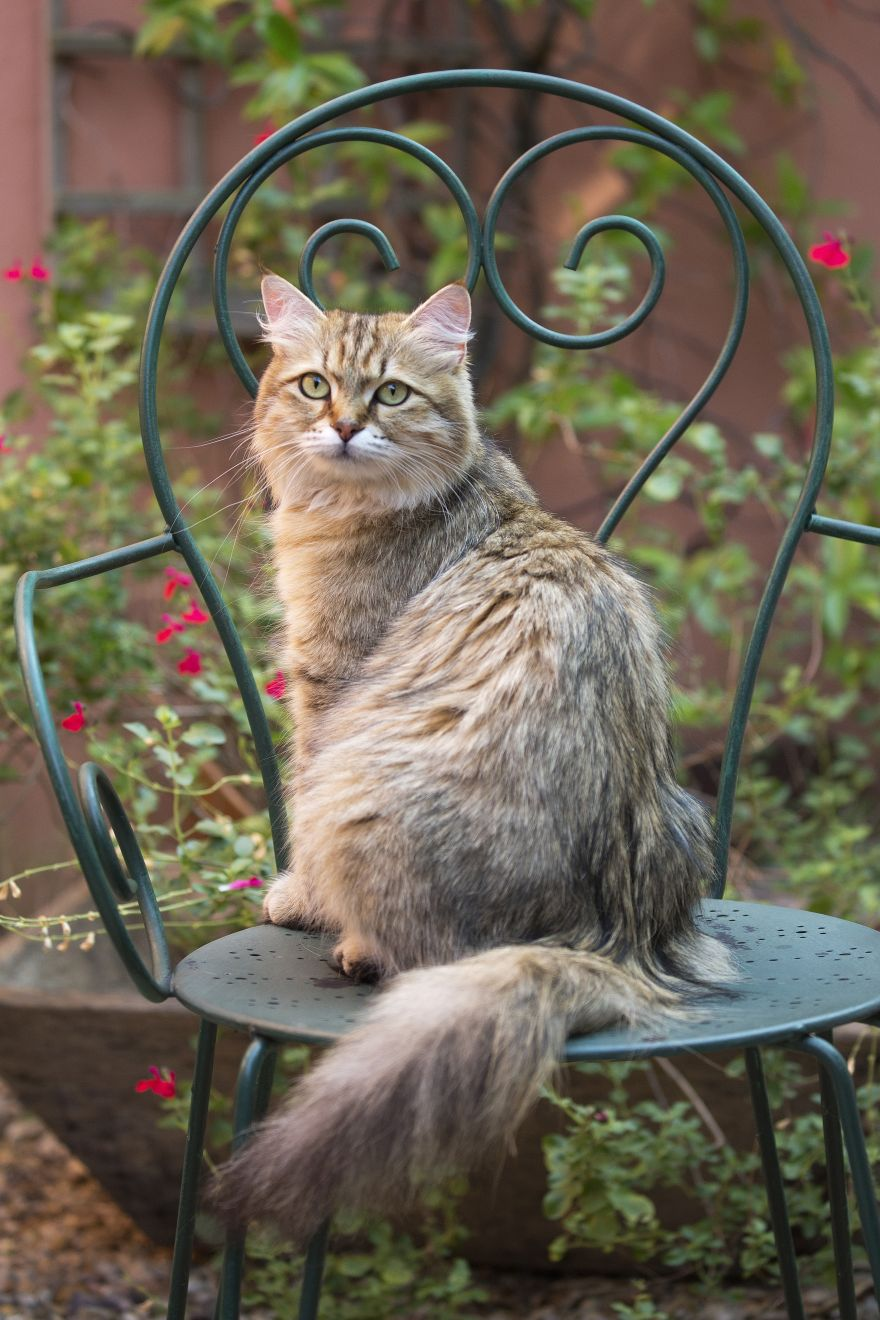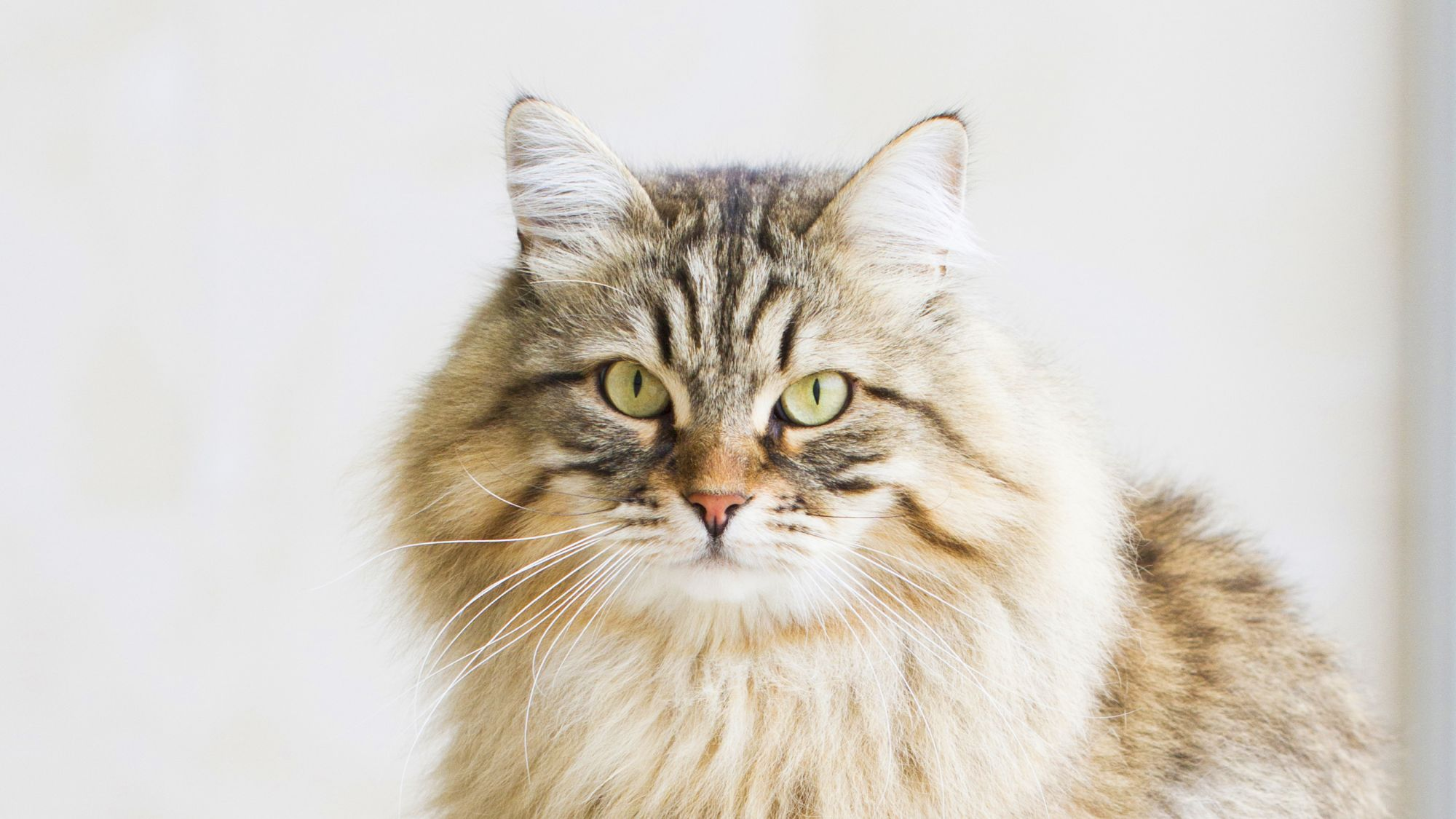Let's talk Siberian cats
The Siberian cat’s thick and lustrous coat is not just for show—although it is magnificent. Over the centuries, this ancient breed developed a triple-layer insulating and waterproof fur coat, ideal for withstanding the harsh climate of its native Siberia. If their ancestors evolved for the rugged, outdoor life, these days, Siberians certainly appreciate more comfortable conditions—these affectionate cats can be playful but are mostly quite content curled up in the warm, near their owners, always ready for a snuggle.
Official name: Siberian
Other names: Neva Masquerade (pointed variety) Siberian Forest Cat
Origins: Russia
Shedding Level
4 out of 5Physical activity needs
1 out of 5Compatibility with other pets
4 out of 5Warm weather?
2 out of 5Kid-friendly
5 out of 5
| Male | Female |
|---|---|
| Height | Height |
| 28 - 33 cm | 28 - 33 cm |
| Weight | Weight |
| 7 - 8 kg | 5.5 - 6 kg |
| Life Stage | |
|---|---|
| Kitten | Adult |
| 4 to 12 months | 1 to 7 years |
| Mature | Senior |
| 7 to 12 years | From 12 years |
Shedding Level
4 out of 5Physical activity needs
1 out of 5Compatibility with other pets
4 out of 5Warm weather?
2 out of 5Kid-friendly
5 out of 5
| Male | Female |
|---|---|
| Height | Height |
| 28 - 33 cm | 28 - 33 cm |
| Weight | Weight |
| 7 - 8 kg | 5.5 - 6 kg |
| Life Stage | |
|---|---|
| Kitten | Adult |
| 4 to 12 months | 1 to 7 years |
| Mature | Senior |
| 7 to 12 years | From 12 years |
Get to know the Siberian
All you need to know about the breed
With their extravagant fur coats, wide round eyes, fluffy ears, and impressive brush-like tails, Siberian cats are true Russian beauties. But if you’re expecting an icy temperament to match their icy Siberian origins, you’re in for a bit of a shock. These wonderful cats are big softies who just want to be close to their chosen humans—they will literally follow you around the house and snuggle up on your lap, offering themselves up as a sort of feline hot water bottle.
Siberian cats will even "talk" to you. Siberians communicate with their humans through sweet little chirps and harrumphs as well as the more conventional purrs and miaows.
Gregarious Siberians get on well with other animals and children too. They are playful and athletic by nature and that may sometimes translate into energetic leaps onto the furniture or frenzied batting at the cursor on your computer. However, these cats also have a calm, placid side. No wonder the Siberian breed is sometimes put to use as a therapy cat.
2 facts about Siberian cats
1. From Russia with gloves
Actually gloves might be the only thing missing from the Siberian’s winter wardrobe. This warm-hearted cat’s weather-proof clothing is impressive: a triple-layer, water-repellent coat, a full ruff, fluffy breeches and a fox-like bushy tail. Tufted paw pads complete the Siberian’s outdoor equipment, there to help them walk across the snowy landscape before they got to you.
2. Lynx-tipped Neva Masquerade
No, it’s not a secret code, but a way of describing a Siberian cat with distinctive markings and tufty ears. The alternate name Neva Masquerade is used for Siberians with darker fur on their extremities (also known as pointed). And if your cat has little tufts of hair on the tips of their ears then they have something in common with their bigger, wilder (distant) cousin, the lynx. These tufts, which help keep cats’ ears clear of dirt, are known as Lynx Tips.
History of the breed
Siberian cats date back at least a thousand years and are thought to be related to the Norwegian Forest Cat: the physical similarities between the two breeds are obvious and they both evolved to withstand harsh cold environments.
Siberian cats have long been popular multitaskers in their homeland of Russia, from farm cats to much-loved family pets, even making magical appearances in local folklore and fairy tales.
Although some had been shown at cat shows as far back as the 1870s, it was only after the end of the Cold War that these fabulous felines really started to be more widely known as some Siberian cats were exported to Europe and the United States. The Cat Fanciers’ Association accepted the breed for registration in 2000 and the breed made it to championship status in 2006.
From head to tail
Physical characteristics of Siberian cats
1.Tail
2.Ears
3.Coat

Things to look out for
From specific breed traits to a general health overview, here are some interesting facts about your Siberian
Heart trouble
Siberians are generally healthy cats but the breed is among those prone to a condition called hypertrophic cardiomyopathy, a form of heart disease that causes the heart muscle to enlarge, decreasing its efficiency. Always try to buy from a reputable breeder who will take care to only breed from disease-free parents.
Watch the pounds
Siberians are a naturally big breed and may be at risk of putting on too much weight, which can lead to health problems. Make sure your cat eats the right food and in the right quantities to ensure they stay in the best of health. Regular check-ups with your veterinarian are always a good idea.

Caring for your Siberian
Grooming, training and exercise tips
All about Siberian cats
Not really—Siberians’ coats may be thick and impressive but they only need a quick brush every few days to stay in good, knot-free condition. In shedding season (twice a year) expect to do a little more brushing and probably a LOT more vacuuming.
No cats can be considered truly hypoallergenic. However, anecdotal evidence suggests the Siberian breed may not elicit such strong reactions in people with allergies as other breeds. That may be because Siberians have lower levels of the allergy-causing protein in their saliva and skin than other cats—but scientists are still researching the phenomenon.
Read more on this topic
Sources
- Veterinary Centers of America https://vcahospitals.com/
- Royal Canin Cat Encyclopaedia. Ed 2010 e 2020
- Banfield Pet Hospital https://www.banfield.com/
- Royal Canin BHN Product Book
Like & share this page